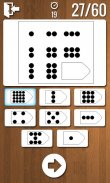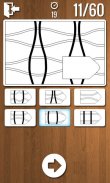







Raven test

Raven test介绍
It is the most common and popular test administered to groups ranging from 5-year-olds to the elderly. It is made of 60 multiple choice questions, listed in order of difficulty. This format is designed to measure the test-taker's reasoning ability, the eductive ("meaning-making") component of Spearman's g. (g is often referred to as general intelligence.) The tests were originally developed by John C. Raven in 1936. In each test item, the subject is asked to identify the missing element that completes a pattern.</div> <div jsname="WJz9Hc" style="display:none">这是最常见和流行的测试管理到组,从5岁的孩子到老人。它是由60道选择题,以难度上市。这种格式是专为测量测试考生的推理能力,在eductive(“意义的决策”)的斯皮尔曼的G分量。 (g的通常被称为一般智力)。这些测试是最初由约翰C.乌鸦1936年在每个测试项目开发中,受试者被要求以确定缺少的元素完成了一个图案。</div> <div class="show-more-end">


























